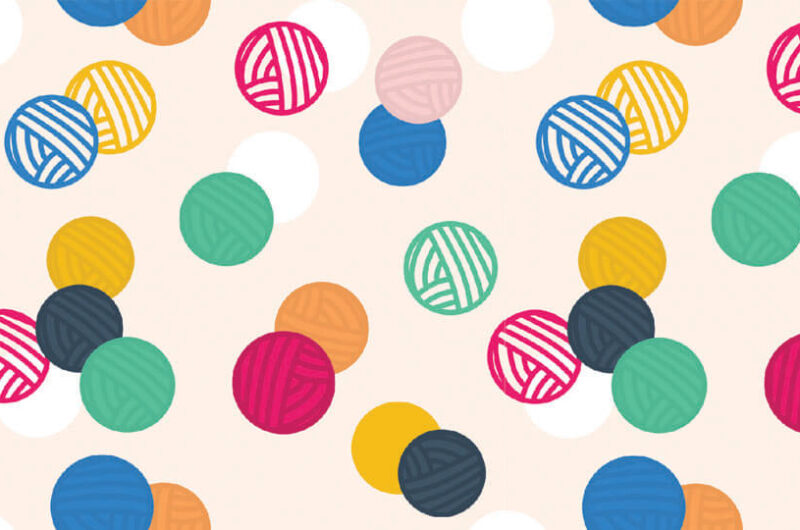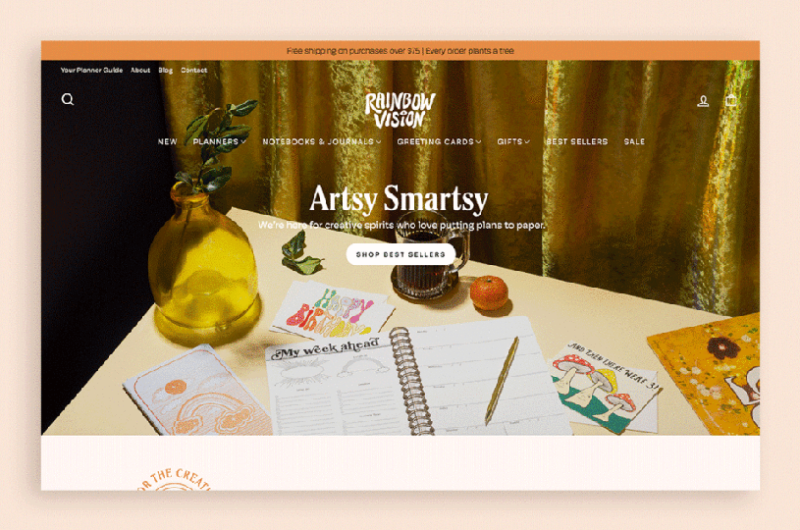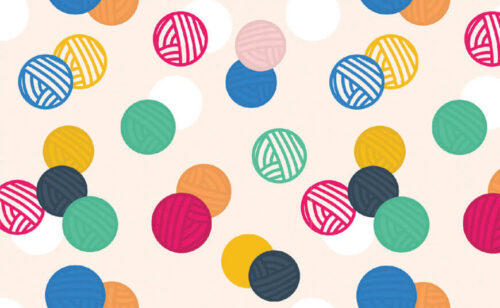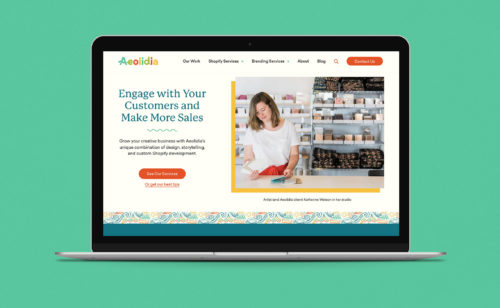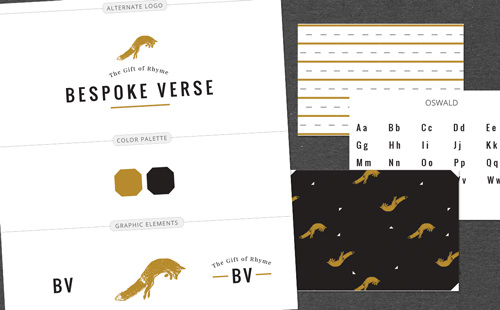
This post is an excerpt from a guest post on Academy of Handmade.
Knowing what “works” and what doesn’t with graphic design can be a great thing if you run a business. Good graphic design can make your brand stand out from the pack, may be necessary for your product development, and gives you a great base to start from on all visual projects – and when we’re talking about marketing yourself on the internet, most of it is visual. Let’s explore how to give your business a competitive edge with design.
I run Aeolidia, a web and graphic design studio that has been serving makers, designers, and other creatives for over a decade. Most, if not all, of our clients, have a great eye for design. This can be a huge help, particularly when they’re able to step back and see the project from the eyes of their customers, instead of relying on their own personal preferences.
I think most of us can tell when something is designed poorly, or when we really like the look of a design. You may be interested in developing your eye for design more purposefully. Switching from “design appreciator” to “designer” means you not only know what looks good, but you know the fundamental principles of why it looks good, and are able to use design for a specific purpose.
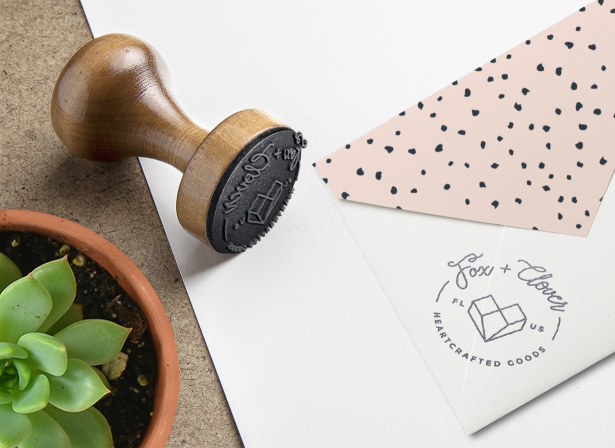
Two books were very helpful to me when I was starting to get interested in graphic design.
Both I found in a thrift store, and were quite vintage! The nice thing about design is that it’s based on the preferences of the human brain, so the information doesn’t go out of date. This is why we still find artwork from the Renaissance appealing. Art and design can be timeless because certain things will always tend to appeal to people.
One book was meant to teach amateur photographers how to take better photographs. What spoke to me were fundamental art and design principles, such as the “rule of thirds” and information about having simple areas in the photo for the eye to rest. Where to let the light fall, and how to find a new angle to make something more interesting.
For weekly tips like this, subscribe to our newsletter
"*" indicates required fields
The other book was from the 50s and was about print design. It explained white space, margins, the contrast between headlines and articles, and the placement of photos and advertisements. It showed how people read and what draws their eye. How you can use color to influence the reader’s gaze. How to set a serious tone, an exciting one, or something humorous, just with the design.
To have a good eye for graphic design, it’s important to not only know what people find pleasing in a composition, but why they feel that way. There are many art books, photography books, typesetting books, etc. that will give you these fundamentals (as well as online courses and tutorials and videos). As you follow along, you’ll instantly know which example is “wrong” and which is “right” and the information about why will be a total, “aha! of course!” moment, which is so fun.

I encourage you to learn more about graphic design, particularly if you’re blogging, creating social media graphics, creating a lookbook or catalog, or trying to put together a website. Knowing the very basics means you can make good judgement calls when you get to the details.
When you look through the Instagram feed of a brand that really understands graphic design, you’ll notice that everything looks cohesive and pulled together, “on brand” for that business and that there aren’t really any dud posts. Similarly, their understanding of design means that their collections of products stand out from a mile away, and they don’t have to work as hard to promote their brand.
When your product packaging looks its best, it’s much easier to get into wholesale relationships with brick-and-mortar stores, and this all relies on your graphic design. We have a story from a client who was shocked to hear from her retailers that the product packaging design is more important than the product itself when they’re choosing what to sell in their store! Read that one here: 6 Product Packaging Design Tips From Store Owners
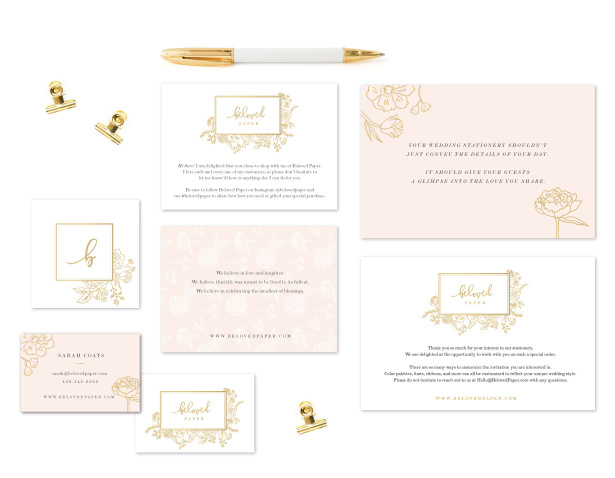
You have plenty on your plate. Just because you know a thing or two about graphic design doesn’t mean that you need to take on all the design tasks for your business. In the same way that reading a medical textbook doesn’t make you a doctor, having knowledge of design doesn’t make you a designer.
A graphic designer works within a set of constraints to solve a specific problem. This is more rigid than a painter approaching a canvas. A designer is more like a technician or an engineer in this way. There is more than one right answer to the question, but their work should always be a tool to solve a problem or reach a goal.
A professional designer lives and breathes design. She will have the experience to take your goals and objectives along with information about your target customer and what’s unique about your business and turn it into a strong design meant to solve a problem. As a design-savvy client, you two will make a formidable team, and the work will be a tool to help you push your business to the next step. You’ll see firsthand how to give your business the competitive edge with design.
Do you want some help with how to actually use the logo, colors, and fonts you’ve pulled together for your brand? I have a guide for you today – something we created for our own logo clients at Aeolidia. It walks you through what you need to know to translate your brand to print and the web. The first part explains all that print lingo that’s making your head spin (DPI? PPI? Raster? Vector? High-res? Low-res? Outlining art?). Next, we go through different file types (GIF, JPG, EPS, TIFF, etc.), what they’re best used for, and what programs you can use to work with them. Then we provide real-life examples from Aeolidia clients of how we used their brand design to keep their print and online presence cohesive and compelling. This is a great primer for using your brand design effectively:
This was originally posted on Academy of Handmade
Brand Strategy
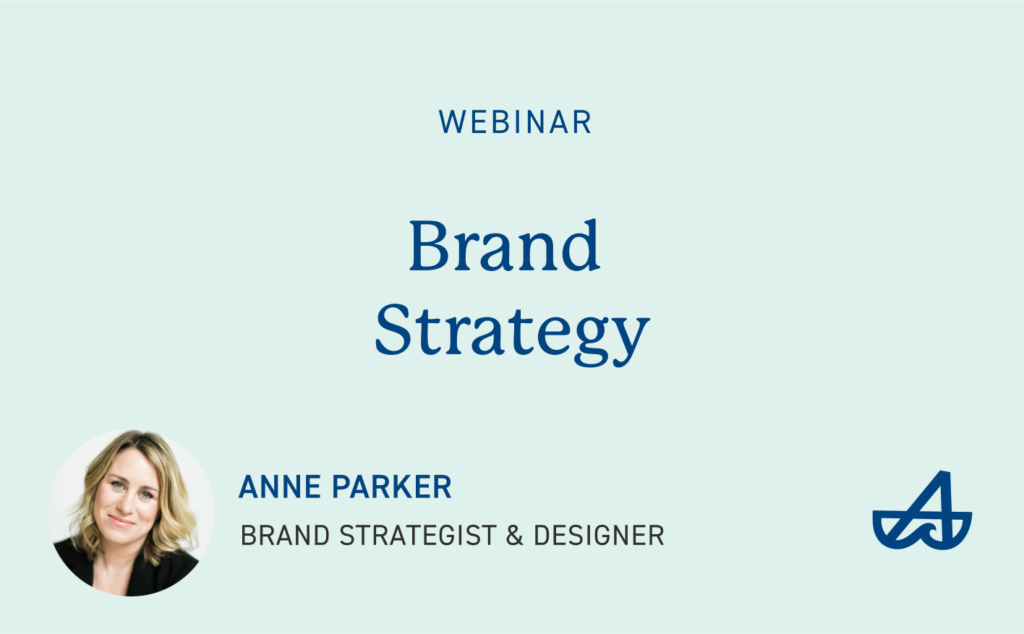
Building a solid, strategic foundation for your brand. With Ann Parker, our brand and web designer and brand strategist.
Related Posts
Let's take your online shop to the next level
The Shopify websites we design have a reputation for substantial improvements to ecommerce conversion rates and online sales. Let's talk!


